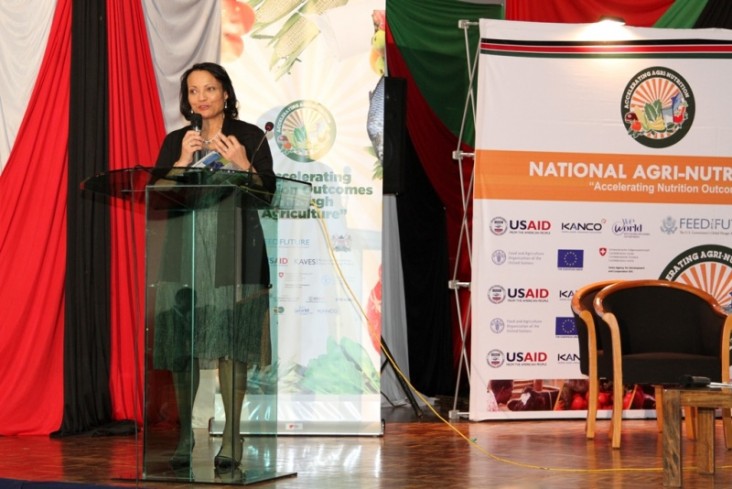Speeches Shim

I am excited to join all of you at this conference. Having traveled to many parts of this beautiful country, what I have seen over and over again is that agriculture is not just an important sector for the economy, but instrumental to Kenya’s achievement of its Vision 2030 goals. Food is a key outcome of agricultural activities, and, in turn, is a key input into nutrition. However, the availability of food from agriculture doesn’t necessarily ensure good nutrition. Evidence shows that achieving nutritional goals is contingent on many factors such as access to food at the household level; health, water and sanitation services and facilities; a healthy environment; and adequate child caring practices.
Given that the genesis of agricultural development was to provide food “adequate for the health and strength of all people,” I expect that one of the top priorities of agriculture would be to look beyond food availability to ensuring people are well-fed and food secure. The United States has developed a Global Food Security Strategy that charts a course for the U.S. Government to contribute to the achievement of global food security and the range of Sustainable Development Goals, together with partners across the globe. Its interdependent objectives include: inclusive and sustainable agricultural-led economic growth, strengthened resilience among people and systems, and most important to our discussion today, a well-nourished population. This includes reducing malnutrition, with a special focus on improving the nutritional status of women and children.
And there has been progress. According to the Kenya Demographic and Health Survey of 2014, national child nutrition trends have improved with a reduction in stunting from 35 percent to 26 percent between 2008 and 2014. However, there are still regions with serious malnutrition that demand our attention. In Kenya, USAID’s goal is to contribute towards improving food security, nutritional status and increased resilience. We know that improved nutritional status may not be achieved by food and agriculture programs alone.
It is for this reason that the U.S. Global Food Security Strategy is advocating for nutrition-sensitive agriculture. The strategy reflects the unique skills, resources, and lessons learned from U.S. federal departments and agencies that contribute to global food security, as well as input from partners throughout the private sector, academic institutions, and civil society.
Nutrition-sensitive agriculture seeks to improve nutrition for women and children through improved production to increase the availability of food, increase income and ensure that women play a central and critical role in agriculture. As smallholder farmers and caretakers of children, women make daily food production and consumption decisions for their families. They are integral to the health and future of their newborns. We know that poor nutrition during the 1,000-day period from conception through the first two years of life adversely affects the development of a child's future health and productivity.
Unless women become more empowered, it will be difficult to sustain productivity growth and have an impact on malnutrition and stunting. Clearly, we need to do more. Over the last five years, the U.S. government, through the Feed the Future initiative, has invested more than $225 million U.S. Dollars in supporting Kenya’s agriculture sector and nutrition support and activities through our Food for Peace program.
The Feed the Future project made a difference by promoting the production of nutritious vegetables and fruits; and also encouraging farming families to consume the nutritious food that they produce. As we deliberate today and tomorrow at this important and timely conference, let us ask ourselves the question, “How do we bridge the disconnect between nutrition and agriculture?” The response requires us all to work together across sectors to create a Kenyan system that is sensitive to nutritional outcomes.
We all need to ensure that our agriculture projects include nutrition-sensitive elements. Nutrition is fully grounded in the U.S. Global Food Security Strategy. So, at USAID, we work to ensure that all agriculture projects have a nutrition component. I encourage all stakeholders to consider this approach to ensure that we bring together agriculture, health and other sectors to find solutions to persistent undernutrition.
Together, with a stronger focus and greater collaboration on agri-nutrition, we will defeat the under and malnutrition challenges in Kenya.
Thank you!

Comment
Make a general inquiry or suggest an improvement.